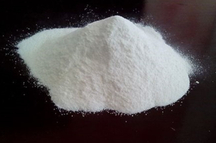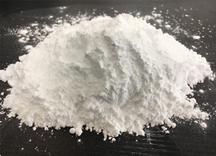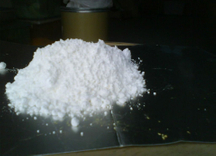
In the world of agriculture, maintaining soil fertility is crucial for successful crop growth and yield. One of the key elements that play a vital role in soil fertility is nitrogen. Nitrogen is essential for plant growth and development, and its availability in the soil significantly impacts crop productivity. This is where urea comes into play. Urea, a popular nitrogen fertilizer, has the ability to unlock the power of nitrogen and enhance the fertility of the soil. In this article, we will explore the science behind urea, the benefits it offers for soil fertility, different forms of urea fertilizers available, various application techniques, best practices for urea application, and potential challenges along with their solutions. By understanding the potential of urea and implementing the right practices, farmers and agricultural professionals can optimize the use of nitrogen for greater soil fertility and ultimately, higher crop yields.
The Science Behind Urea
Urea, a compound that is ften associated with fertilizers, actually has a much broader scope and plays a crucial role in various industries. The science behind urea is fascinating and encompasses its chemical properties, production process, and diverse applications.
Chemically, urea is an organic compound with the formula (NH₂)₂CO. It is a colorless, odorless solid that dissolves readily in water. Urea is a highly versatile substance due to its unique ability to form hydrogen bonds with water molecules, making it an excellent humectant and moisturizing agent. This property has led to its widespread use in the cosmetic and skincare industry, where it is utilized in lotions, creams, and other moisturizing products to enhance hydration and prevent dryness.
In addition to its moisturizing properties, urea also serves as a vital component in the manufacturing of fertilizers. It is an effective source of nitrogen, a crucial nutrient required for plant growth. Urea-based fertilizers provide a slow-release mechanism for nitrogen, ensuring that plants receive a steady supply of this essential element over an extended period. This not only promotes healthy growth but also minimizes the risk of nutrient leaching into the environment.
The production of urea involves a complex chemical process known as the Haber-Bosch process. This process combines ammonia and carbon dioxide under high pressure and temperature to form urea. The raw materials for urea production are derived from natural gas, coal, or petroleum-based sources. Once produced, urea can be further processed into various forms such as prills, granules, or liquid solutions, depending on its intended use.
Apart from its applications in moisturizers and fertilizers, urea finds extensive use in the pharmaceutical industry as a diuretic and in the production of resins, adhesives, and plastics. It is also utilized in the textile industry for fabric dyeing and finishing processes. Its ability to react with certain compounds enables it to enhance the color fastness and durability of dyed textiles.
Benefits of Urea for Soil Fertility
Urea, a white crystalline solid, is a widely used fertilizer that plays a crucial role in enhancing soil fertility. It is composed of nitrogen and is considered a cost-effective and efficient source of this essential plant nutrient. The benefits of urea for soil fertility are numerous and have been recognized by farmers and agricultural experts worldwide.
One of the primary advantages of using urea as a fertilizer is its high nitrogen content. Nitrogen is an essential nutrient for plants as it plays a vital role in their growth and development. Urea contains about 46% nitrogen, which makes it an excellent source for replenishing nitrogen levels in the soil. When applied to the soil, urea breaks down into ammonia through a process called hydrolysis. This ammonia then converts into nitrate, a form of nitrogen that plants can readily absorb and utilize for their growth. This process ensures that plants have a continuous supply of nitrogen, promoting healthy and robust growth.
Another benefit of urea for soil fertility is its versatility. Urea can be used on a wide range of crops and is suitable for various soil types. Whether it is used on agricultural crops, horticultural plants, or even turfgrass, urea proves to be an effective fertilizer. Its versatility makes it a popular choice among farmers and gardeners, as it simplifies the fertilization process and ensures optimal plant nutrition.
Furthermore, urea is a convenient fertilizer to handle and apply. Its white crystalline form makes it easy to store and transport, reducing the risk of spillage or wastage. Urea can be applied to the soil in various ways, including broadcasting, top-dressing, or incorporation into the soil during planting. This flexibility in application methods makes urea a practical choice for both small-scale and large-scale farming operations.
In addition to its nitrogen content, urea also provides plants with a small amount of sulfur, another essential nutrient. Sulfur plays a crucial role in the synthesis of proteins and enzymes, contributing to the overall health and productivity of plants. By including sulfur in its composition, urea ensures that plants receive a comprehensive nutrient package, further enhancing soil fertility.
Different Forms of Urea Fertilizers
Urea fertilizers play a crucial role in modern agriculture, providing essential nutrients to plants for optimal growth and yield. Urea is a widely used nitrogenous fertilizer that contains a high percentage of nitrogen, making it an effective choice for promoting healthy plant development. There are various forms of urea fertilizers available in the market, each with its own unique characteristics and applications.
One common form of urea fertilizer is granular urea. Granular urea is a solid form of fertilizer that is typically spread on the soil surface or incorporated into the soil through cultivation. It is easy to handle, transport, and store, making it a popular choice among farmers. Granular urea slowly releases nitrogen into the soil, providing a consistent nutrient supply to plants over an extended period. This controlled-release feature minimizes nitrogen loss through leaching and volatilization, ensuring that plants receive an adequate amount of nitrogen for sustained growth.
Another form of urea fertilizer is liquid urea. Liquid urea is a concentrated solution of urea that is easily soluble in water. It can be applied directly to the soil or foliar sprayed onto the plant leaves. Liquid urea is quickly absorbed by plants, providing an immediate nitrogen boost. This form of urea fertilizer is particularly useful in situations where rapid nitrogen uptake is required, such as during periods of high nutrient demand or in crops with a short growing season. Additionally, liquid urea can be easily blended with other fertilizers or chemicals, allowing for customized nutrient formulations tailored to specific crop requirements.
Urea also comes in the form of urea-ammonium nitrate (UAN) solution. UAN is a liquid fertilizer that contains a mixture of urea and ammonium nitrate. This combination provides a readily available source of nitrogen for plants. UAN solution is versatile and can be applied through various application methods, including spraying, fertigation, and injection. It is commonly used in agricultural systems that require precise nutrient management, such as drip irrigation or pivot systems. The flexibility and efficiency of UAN solution make it an ideal choice for optimizing nutrient uptake and minimizing nitrogen loss.
Application Techniques for Urea
Urea is a versatile compound that finds application in various industries. From agriculture to cosmetics, urea plays a vital role in different processes. In this article, we will explore different application techniques for urea and how it benefits various sectors.
In the field of agriculture, urea is widely used as a fertilizer. Its high nitrogen content makes it an excellent source of nutrients for plants. Farmers apply urea to their crops to ensure healthy growth and increased yields. The application technique for urea in agriculture involves spreading it evenly over the soil or directly injecting it into the roots. This allows the plants to absorb the nitrogen and utilize it for their growth and development.
Another important application of urea is in the manufacturing of resins and adhesives. Urea-formaldehyde resins are widely used in the woodworking industry for making plywood, particleboard, and other composite materials. The application technique for urea in this industry involves mixing it with formaldehyde and other additives to form a resin. This resin is then used to bind the wood particles together, resulting in strong and durable products.
Urea also has a significant role in the field of medicine. It is used in the formulation of topical creams and ointments, especially for treating skin conditions such as psoriasis and eczema. The application technique for urea in these products involves incorporating it into a base cream or ointment, which is then applied to the affected area of the skin. Urea helps to moisturize the skin, reduce scaling, and promote healing.
In the textile industry, urea is used in the dyeing process. It acts as a dye carrier and helps to enhance the color fastness of the fabric. The application technique for urea in dyeing involves dissolving it in water and then adding the dye to create a dye bath. The fabric is then immersed in the dye bath, allowing the urea to facilitate the absorption of the dye into the fabric fibers.
Apart from these industries, urea also finds application in the production of cosmetics, animal feed, and even as a de-icer for roads and runways. Its versatility and wide range of applications make urea a valuable compound in various sectors.
Best Practices for Urea Application
Urea is a widely used fertilizer in agriculture, known for its high nitrogen content. However, its effectiveness largely depends on the best practices for application. In order to maximize the benefits of urea and ensure optimal crop growth, farmers and agricultural experts need to follow certain guidelines.
One of the key best practices for urea application is timing. It is important to apply urea at the right time in order to meet the nutrient requirements of the crops. Typically, urea is applied before planting or during the early stages of crop growth. This allows the nitrogen to be readily available for the plants when they need it the most.
Another important aspect of urea application is proper calibration of equipment. Farmers should ensure that their equipment is accurately calibrated to ensure uniform distribution of urea across the field. Uneven application can result in nutrient imbalances, leading to patchy crop growth and reduced yields. Regular maintenance and calibration of equipment are essential to achieve consistent and efficient urea application.
Furthermore, it is crucial to consider the weather conditions when applying urea. Wet or rainy conditions can lead to urea volatilization, where the nitrogen is lost to the atmosphere as ammonia gas. To minimize this loss, it is recommended to apply urea when the weather is dry or when rain is not expected within the next 24 to 48 hours. Additionally, incorporating urea into the soil immediately after application can help reduce volatilization.
Proper placement of urea is also vital for efficient nutrient uptake by the plants. Urea can be surface-applied or incorporated into the soil. Surface application is suitable for crops with a well-developed root system, while incorporation is preferred for crops with shallow root systems. Placing urea close to the root zone ensures that the nitrogen is readily available for uptake by the plants, promoting optimal growth and development.
Lastly, it is essential to avoid applying urea near water sources or in areas with high water tables. Urea can contribute to water pollution if it is washed off the fields by rainfall or irrigation. To prevent environmental contamination, farmers should adhere to buffer zone regulations and follow recommended application rates.
Potential Challenges and Solutions
In today's rapidly evolving world, businesses face numerous challenges that can impede their growth and success. One such challenge is the increasing demand for sustainability and environmental responsibility. As consumers become more conscious of their carbon footprint, companies are under pressure to find innovative solutions that reduce their impact on the planet. One potential solution to this challenge is the use of urea.
Urea, a compound commonly found in urine and other bodily fluids, has proven to be a valuable resource in various industries. It is widely used as a fertilizer due to its high nitrogen content, which promotes plant growth. However, urea can also be utilized in the production of adhesives, resins, and plastics, making it a versatile and sustainable option for businesses.
One of the main advantages of using urea is its low carbon footprint. Compared to traditional manufacturing processes, the production of urea generates significantly fewer greenhouse gas emissions. This not only helps companies meet their sustainability goals but also reduces their overall environmental impact. By incorporating urea into their products or production processes, businesses can take a step towards a greener future.
Another challenge that companies often face is the need for cost-effective solutions. In today's competitive market, businesses are constantly looking for ways to optimize their operations and reduce expenses. Urea offers a cost-effective alternative to traditional materials. Its widespread availability and relatively low production costs make it an attractive option for companies looking to streamline their processes without compromising on quality.
Furthermore, urea can also help address the challenge of waste management. With the increasing amount of waste generated globally, finding sustainable ways to dispose of or repurpose waste is crucial. Urea can be used as a binding agent in the production of particleboards, which are commonly used in the construction industry. By incorporating waste materials into these boards and utilizing urea as a binder, companies can reduce landfill waste and contribute to a circular economy.
Conclusion
Urea is a versatile compound with a wide range of applications in various industries. It is used in skincare products, fertilizers, pharmaceuticals, textiles, and more. Urea offers benefits for soil fertility by providing plants with nitrogen and sulfur, promoting healthy growth and optimal nutrition. Different forms of urea fertilizers, such as granular urea, liquid urea, and UAN solution, offer distinct advantages for nutrient release, absorption, and application flexibility. Proper application techniques and best practices are crucial for maximizing the effectiveness of urea as a fertilizer. Urea is also a viable option for businesses looking for sustainable and cost-effective solutions, thanks to its low carbon footprint and affordability. Embracing urea can help companies overcome challenges and contribute to a more sustainable future.

















